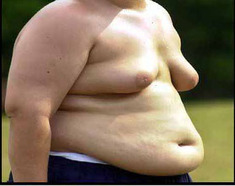According to USTA Serves (the national charitable foundation of the USTA), this is the first nationwide study to analyze the educational, behavioral and health benefits for adolescents who participate in tennis. Below you will find the major take-homes from the research; all these points are beneficial to understand to help promote the benefits of tennis – especially to parents.
1) Tennis is a unique catalyst for educational advantage.
Compared to non-athletes as well as the top nine high school sports, tennis athletes devote more time each to homework, report higher grades and are more likely to attend a four-year university.
Remember that this highlights a correlation – not a causation. This means that just playing tennis alone will not cause better grades or going to a four year college. Socio-economic status, parental influence, geography, aptitude among many other factors contribute.
2) Tennis players reported significantly lower rates of suspension from school and other disciplinary measures than participants in other sports as well as non-athletes.
3) Educational advantages among tennis players occurred across and within all family and socioeconomic levels.
“Half of U.S. adolescent tennis participants come from families in which parents have less than high school education, a high school degree only or some college—indicators of middle and lower socioeconomic levels. The perception that tennis is a “country club” sport benefiting only one segment of the population is at most only 50% correct. The educational and social advantages associated with tennis participation were strongest among adolescents from higher-socioeconomic-level families, but still present in families with middle and lower socioeconomic levels and often higher when compared to adolescents who participate in other high school sports or do not participate in sports at all.
4) Adolescent tennis players are well-rounded.
The research found that tennis players performed more extracurricular activities and volunteered in their communities at higher rates than other high school athletes and students who did not participate in sports.
5) Tennis contributes to improved adolescent health.
Participation in tennis was associated with lower rates of:
- Cigarette smoking
- Binge drinking
- Marijuana use
- Being overweight
- Being obese
6) Adolescent participation:
• Whites: 77%
• Blacks: 9%
• Hispanics: 14%
• Male: 47%
• Female: 53%
• Live in the South: 33%
• Live in the West: 26%
• Live in the North Central States: 20%
• Live in the Northeast: 20%
Here is the link for the executive summary of The USTA Serves Special Report, More Than a Sport: Tennis, Education and Health
http://assets.usta.com/assets/822/15/More_than_a_Sport_Executive_Summary-v7-web.pdf
Here is the link for the full report of the survey data of The USTA Serves Special Report, More Than a Sport: Tennis, Education and Health
http://assets.usta.com/assets/822/15/More_than_a_Sport_Full_Report_2.27.13.pdf






 RSS Feed
RSS Feed
